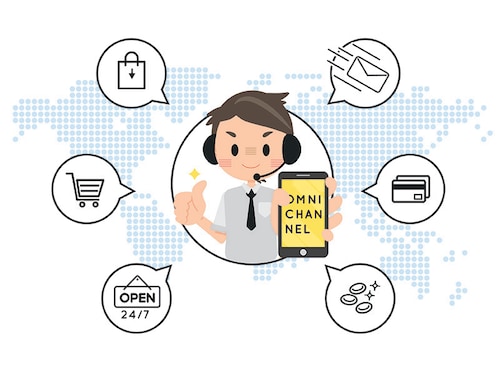4 reasons to go omni-channel, and 3 reasons why you may be failing
Companies with omni-channel customer service capabilities achieve a higher year-over-year improvement in first contact resolution


Today’s customer journey moves through many channels — text, chat, voice — for a single enquiry. Most businesses, however, have multi-channel contact centers that usually operate in silos. These centers may not be equipped to handle customer journeys across channels. On the other hand, companies that deploy omni-channel strategies to meet customer demand are more successful. Omni-channel provides consistent, seamless experience by providing a single view of the customer. Companies are able to retain a high 89 percent of customers with robust omni-channel customer engagement strategies, compared with 33 percent for companies with weaker omni-channel engagement. A personalised approach helps companies in targeting customers better. Companies with omni-channel customer service capabilities achieve a higher year-over-year improvement in first contact resolution. The case for an omni-channel approach is clearly established because it helps businesses to:Grow sales: Omni contact centers collect customer data by tracking their interactions across channels. Analytics, in combination with Big Data, gives meaningful insights on customer buying patterns, channel preferences, and behaviors. Matching offers can then be communicated to them on their preferred channel at a preferred time. This increases their propensity to make a purchase. For example, an industry study 49 percent of consumers buy from their favorite omni-channel brands at least once per week.
Reduce customer churn: Businesses with omni-channel strategies have 91 percent greater year-over-year customer retention rates against those that don’t, per Aspect Software. Lack of on-demand customer support is often the root cause of customer churn. Simple queries can be resolved by virtual agents, minimizing waiting time. Understanding customer call patterns and behaviors can be used to consistently improve customer service. Engage with millennials: Brands have evolved omni-channel strategies for millennials as this group now has over $200 million in annual buying power. Millennials expect excellent customer service by agents, enabled by technology. Although digitally savvy, millennials have an intrinsic desire for personal interactions. These can be addressed through self-service options for routine queries, while agents can be used for complex queries. Businesses can also use analytics to recommend offers and products and customise promotions to millennials. Improve customer satisfaction: Maximizing satisfaction with customer journeys can increase Customer Satisfaction (CSAT) by 20 percent, according to McKinsey & Co. When customers call a contact center, their number 1 priority is quick problem resolution. Tools such as omni-channel desktop provides an integrated view of the customer journey through different channels. By preserving all relevant, contextualized data across channels and improving customer collaboration, an omni-channel contact center improves first contact resolution. Omni-channel is the industry buzzword for today’s contact centers. Businesses are moving toward an omni-channel strategy, and investing in these solutions! But only a few are successfully delivering a seamless and personalized experience despite a multitude of channels and devices used by customers. The reason? Businesses shifting from multi-channel to omni-channel engagement are facing impediments in their transition process. We categorize them under three distinct areas: people, tools, and processes. People: In any contact center, the advisor skill set, or the lack of it, remains an obstacle. Advisors transitioning toward omni require a different skill set. Multi-channel advisors may not be equipped to handle an omni platform. It’s essential to identify skilled advisors for the “new normal” and deploy them on the frontline. Also, ensure that your advisors are prepared to work on more than one channel in the future. Tools: Most solutions offered by contact centers address specific functionalities. But they cannot be integrated with other business applications. They cannot support data from multiple entry points, process it, and report accurate information. It’s imperative for businesses to upgrade their legacy systems or overhaul them for omni-channel transition. Organisations should also keep their IT infrastructure in a state of readiness to integrate disparate systems, even legacy systems, to aggregate and provide a single view of the customer. Processes: Omni-channel requires a mindset change at an organisation level. In an omni environment, the ownership of customer experience is pan-organisation. Companies should introduce process-level changes across different customer-facing functions to meet this challenge. Also, evolve strategies to assist advisors in adapting to the new framework. ConclusionProviding omni-channel customer care is no longer an option; it is what will differentiate successful companies from the laggards. Contact centers are the last resort for customers when other channels fail. This means customers expect contact centers to treat them as individuals, not as a sum of different individual interactions. Omni-channel is therefore an imperative. Businesses of today should embrace omni-channel, if they haven’t done already. The returns are worth it! The author is the Senior Director, Delivery at Concentrix
First Published: May 23, 2018, 16:47
Subscribe Now